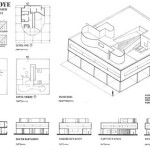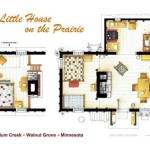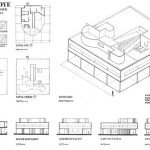Colonial Home Plans with Wrap Around Porch: A Timeless Blend of Elegance and Functionality
The charm of a Colonial home is undeniable. Characterized by symmetry, classical architectural details, and a sense of stately grace, these homes evoke a sense of history and refined living. When coupled with a wrap-around porch, the Colonial style achieves an even greater level of appeal, blending indoor and outdoor living seamlessly while enhancing the home's visual interest and practical use.
Colonial architecture in the United States evolved over centuries, absorbing influences from various European styles. Early Colonial homes were typically simple and functional, built to withstand the harsh conditions of the New World. As settlements grew and prospered, architectural details became more elaborate, borrowing from Georgian, Federal, and other European trends. The wrap-around porch, while not always a standard feature of early Colonial homes, became increasingly popular in later iterations, particularly in warmer climates.
Understanding the elements that define both Colonial architecture and the wrap-around porch is crucial to appreciating the synergy between the two. This article aims to explore the key features of Colonial home plans, focusing on how the addition of a wrap-around porch elevates the design and provides significant benefits to the homeowner.
Key Features of Colonial Home Plans
Colonial architecture encompasses a range of styles, but certain elements consistently define these homes. Recognizing these features aids in identifying and appreciating the architectural nuances of a Colonial home plan. Symmetry, a hallmark of Colonial design, is evident in the façade, window placement, and often, the interior layout.
The exterior typically features a centrally located front door balanced by an equal number of windows on either side. This balanced composition extends to the roofline, which is often gabled or hipped, maintaining a symmetrical appearance. The use of columns, pilasters, and other classical details further enhances the sense of order and formality. Common materials include brick, wood siding, and stone, depending on the region and the specific Colonial style.
Interior layouts often mirror the exterior's symmetry. A central hallway typically runs from the front door to the back of the house, with rooms arranged on either side. Formal living rooms, dining rooms, and studies are common, reflecting a focus on entertaining and refined living. Fireplaces are often a prominent feature, providing both warmth and a focal point for the room. Staircases are typically grand and centrally located, adding to the home's overall sense of elegance.
Windows play a crucial role in Colonial design. Double-hung windows with multiple panes are common, contributing to the symmetrical appearance and allowing for ample natural light. Shutters, both functional and decorative, are often added to enhance the architectural detail and provide protection from the elements.
The Practical and Aesthetic Advantages of a Wrap-Around Porch
A wrap-around porch extends along two or more sides of a house, creating a continuous outdoor space that offers a multitude of benefits. In the context of a Colonial home plan, the addition of a wrap-around porch not only enhances the aesthetic appeal but also provides significant practical advantages. It fundamentally alters the way occupants interact with both the home and the surrounding environment.
One of the primary benefits is the creation of a sheltered outdoor living space. The porch provides protection from the sun, rain, and wind, allowing occupants to enjoy the outdoors in a more comfortable manner. This sheltered space becomes an extension of the home's living area, perfect for relaxing, entertaining, or simply enjoying the scenery. The size of the porch allows for different zones to be created, perhaps a gathering area with seating and a dining space with a table and chairs.
Aesthetically, the wrap-around porch enhances the visual appeal of the Colonial home plan. The horizontal lines of the porch create a sense of grounding and stability, complementing the vertical lines of the house. The porch also acts as a transitional element, softening the transition between the indoors and outdoors. The addition of architectural details, such as columns, railings, and decorative trim, can further enhance the porch's aesthetic appeal and complement the overall design of the home.
Furthermore, a wrap-around porch can increase the home's curb appeal and property value. A well-designed and maintained porch creates a positive first impression, adding to the home's overall charm and desirability. The added living space and enhanced aesthetic appeal can also increase the home's market value. The porch provides a tangible and visible benefit to potential buyers.
From a practical standpoint, a wrap-around porch can help regulate the home's temperature. By providing shade, the porch can help to keep the interior cooler in the summer months, reducing the need for air conditioning. In the winter, the porch can act as a buffer, helping to insulate the home from the cold. This natural temperature regulation can result in significant energy savings.
Integrating the Wrap-Around Porch into Colonial Home Design
Successfully integrating a wrap-around porch into a Colonial home plan requires careful consideration of several factors. These include the porch's size, shape, materials, and architectural details. The goal is to create a seamless transition between the house and the porch, ensuring that the two elements work together harmoniously.
The size of the porch should be proportional to the size of the house. A porch that is too small will feel cramped and uncomfortable, while a porch that is too large will overwhelm the house and detract from its visual appeal. The shape of the porch should also complement the shape of the house. A rectangular house might benefit from a rectangular porch, while a house with a more complex shape might require a porch with a more irregular design.
The materials used for the porch should be consistent with the materials used for the house. For example, a brick house might benefit from a brick porch foundation, while a wood-sided house might benefit from a wood porch deck and railings. The architectural details of the porch should also complement the architectural details of the house. This could include matching the style of the columns, railings, and trim. Consistent paint colors and finishes will also contribute to visual harmony.
Thoughtful planning is also needed regarding the placement of the porch's entrances and exits. Consider how the porch connects to the interior spaces of the house, as well as to the surrounding landscape. Creating multiple access points can improve the flow of traffic and enhance the functionality of the porch. Steps and ramps should be carefully designed and placed to ensure accessibility.
Finally, consider the landscaping around the porch. Planting trees, shrubs, and flowers can create a visually appealing and inviting space. The landscaping can also provide shade and privacy, enhancing the comfort and usability of the porch. Well-planned landscaping integrates the porch seamlessly into the surrounding environment.
By paying attention to these details, it is possible to integrate the wrap-around porch into a Colonial home plan in a way that enhances both the aesthetic appeal and the functionality of the home. The resulting design will be a timeless blend of elegance and practicality, providing a comfortable and inviting space for generations to enjoy.
In conclusion, Colonial home plans with wrap-around porches offer a remarkable blend of historical charm and modern living. The symmetry and classical details of the Colonial style, combined with the expansive outdoor space provided by the wrap-around porch, create a home that is both beautiful and functional. The key to a successful design lies in carefully integrating the porch into the overall architectural plan, ensuring that it complements the home's aesthetic and provides practical benefits to the homeowner. The result is a timeless and elegant home that embodies the best of both worlds.
Colonial Country Home With 5 Bdrms 2658 Sq Ft Floor Plan 105 1068

Plan 70649mk Lovely Colonial House With Stacked Wrap Around Porches Plans Porch
:max_bytes(150000):strip_icc()/HOH_SL1482-df5abe9d7ee44f7a9f29e0a7b412b06c.jpg?strip=all)
13 House Plans With Wrap Around Porches

Colonial Home With Wrap Around Porch And Separate Garage Google Search House Farmhouse Plans My Dream
:max_bytes(150000):strip_icc()/fcp_1131-6d1ee16d664949f08815b69d4a5bdbe3.jpg?strip=all)
13 House Plans With Wrap Around Porches

On The Market A Colonial Home In Longmeadow With Wraparound Porch
:max_bytes(150000):strip_icc()/southern-living-house-plans-porch-18324aaa8f98476dbfab68520914c229.jpeg?strip=all)
These Southern Living House Plans Have Dreamy Porches

Southern Living Dreamy House Plans With Front Porches Blog Dreamhomesource Com

Wrap Around Porch House Plans

Wrap Around Porch House Plans Designs For Builders








